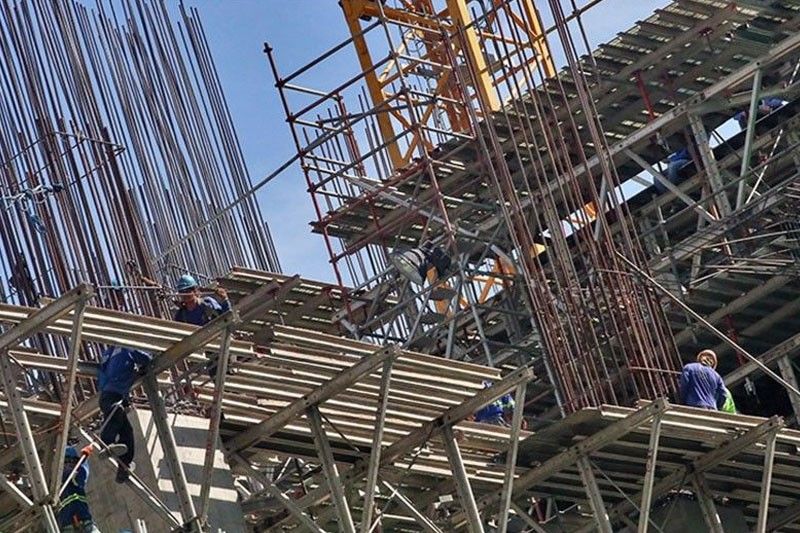
Upgrade to High-Speed Internet for only ₱1499/month!
Enjoy up to 100 Mbps fiber broadband, perfect for browsing, streaming, and gaming.
Visit Suniway.ph to learn
MANILA, Philippines — Is it fair for a security guard in the city to earn more than one stationed in the province? For several labor groups, the answer is no. They believe equal work deserves equal pay, no matter where someone chooses to work in the country.
For this reason, labor groups are urging the next set of lawmakers to establish a uniform living wage for each industry — one for nurses, another for security guards, farmers, factory workers, delivery riders and other employees.
“‘Parehong pagod, dapat parehong sahod (Equal effort should mean equal pay),” Eli San Fernando, Kamanggagawa Partylist general-secretary, said at a press conference on Wednesday, April 30.
This begs the question: are regional minimum wages no longer enough to support even basic needs?
In the Philippines, wages are set through a regionalized system. Regional wage boards determine the minimum wage in each area, adjusting rates based on studies and consultations to reflect the local cost of living.
Since the prices of goods, services, and levels of productivity vary across regions, the idea is that wages should too.
This system was established under Republic Act 6727, or the Wage Rationalization Act of 1989, which replaced the national minimum wage with a more localized approach in an attempt to balance the needs of workers and businesses.
However, workers from various sectors and provinces say today's minimum wages fall short of meeting their families’ needs. Labor groups also contend that the gap between prices in rural and urban areas is only narrowing.
This is why Rene Tadle, a nursing professor and president of the Council of Teachers and Staff of Colleges and Universities of the Philippines, questioned why teachers’ salaries differ across regions.
“Kasi ang sweldo ng mga guro most of the time [ay] P12,000 o mas mababa pa. At subalit sa Metro Manila, P18,000 to 23,000. Pero ‘yung presyo naman, whether you go to Ilocos, you go to Manila, pare-pareho lang,” he said.
(Because the salary of teachers most of the time is P12,000 or even lower. Meanwhile, in Metro Manila, P18,000 to P23,000. But the prices, whether you're in Ilocos or Manila, are the same.)
As the middle and lower classes grapple to stay above the poverty line, labor groups are calling for legislative wage hikes and the abolition of regional wage boards.
In Congress, House Bill 11376 proposes a P200 wage hike for private sector workers nationwide, but it has stalled since passing second reading in the House.
RELATED: House panel endorses P200 wage hike for private sector workers
Living wage far out of reach
According to the economic think tank IBON Foundation, a family of five in the Philippines needs an average of P1,225 a day, or around P27,000 a month, to live decently. This amount covers not just food, water and rent, but also children’s education, healthcare and savings.
Most regions require between P1,000 and P1,300 daily, except Eastern Visayas, where it's slightly below P1,000, and Bangsamoro Autonomous Region in Muslim Mindanao (BARMM), where families need over P2,000 a day.
However, the current minimum wages in most regions are roughly half of the family living wage. In BARMM, the situation is even worse: the minimum wage is just P361, the lowest in the country.
In comparison, a minimum wage earner in Metro Manila is supposed to earn P645 a day. Yet, similar workers in BARMM earn about half that amount, despite needing much more to support their families.
With only modest wage hikes granted by regional boards, labor groups believe the current system has failed to keep up with rising costs, driving many provincial workers to seek better-paying jobs in Metro Manila and preserving inequalities in the country.
Joselito Sancho, president of the Light Rail Manila Corporation Supervisory Union, said this is also one reason Metro Manila has become increasingly crowded, as seen in the growing number of train commuters compared to previous years.
Labor groups, however, stressed that wages are just one of many challenges faced by Filipino workers. Some sectors, like agricultural workers, often do not receive the standard minimum wage in their region, while others, such as security guards, face delays in payment.
Private healthcare workers have also pointed out that they do not receive the same hazard pay or benefits as their public sector counterparts.
For these groups, they believe the government plays a crucial role in addressing these issues, with a wage hike and abolishment of regional wage boards being an important first step.
Gov't subsidy crucial for wage hike
Discussions on wage hikes, whether set regionally or through legislation, have long been contentious, especially among economists.
Some decision-makers, including President Ferdinand “Bongbong” Marcos Jr., argue that sharp increases could fuel inflation, while others believe higher wages are essential to boost productivity, raise disposable income and stimulate local spending and economic activity.
RELATED: Marcos: P200 wage hike may hurt businesses, fuel inflation, needs review
For large conglomerates with substantial profits, Fernando believes they can still remain profitable even if they fully absorb the cost of raising workers’ wages.
IBON’s analysis estimates that a P656 wage hike would account for only around P600 billion or 36% of large enterprises’ profits, based on 2022 data from the Philippine Statistics Authority on business earnings, employment and establishments.
Meanwhile, the think tank said it would only cost medium enterprises 29.7%, or P84.9 billion.
Fernando cited Forbes’ 2025 list of the country’s richest billionaires, noting its finding where most saw their net worth increase over the past year.
“So we believe that these big businesses, especially run by oligarchs, by the big businessmen themselves, kaya nilang itatupad ‘yan (they can fulfill that),” he said.
RELATED: Forbes list: Manny Villar is richest among top 15 billionaires in Philippines
However, for small businesses that may suffer losses if they bear the full cost of wage increases, Fernando said the government should step in with subsidies — just as it did during the COVID-19 pandemic through the Small Business Wage Subsidy Program.
“Dapat magkaroon ng mas maraming insentibo ‘yung mga maliit at maliitan na mga negosyo. Nang sa gayon, mag-develop sila at maging competitive pagdating sa merkado. Para yung maliit, lumaki,” he said.
(There should be more incentives for small and micro businesses so that they can develop and become competitive in the market. This is so the small ones can grow.)
Should a national living wage be imposed, Fernando said it would then be a matter of ensuring implementation. In the meantime, he proposed that industry-wide wage fixing begin in highly urbanized cities and provinces before expanding to other areas.
Currently, Senate Bill 2962, pending committee approval, seeks to eliminate regional wage rates and replace them with a national wage and productivity board to abolish the regional boards.
If the proposed legislative wage hikes in Congress — a P100 increase suggested by the Senate and P200 by the House — are approved, it would mark the first legislative wage increase in 36 years.

 12 hours ago
4
12 hours ago
4



